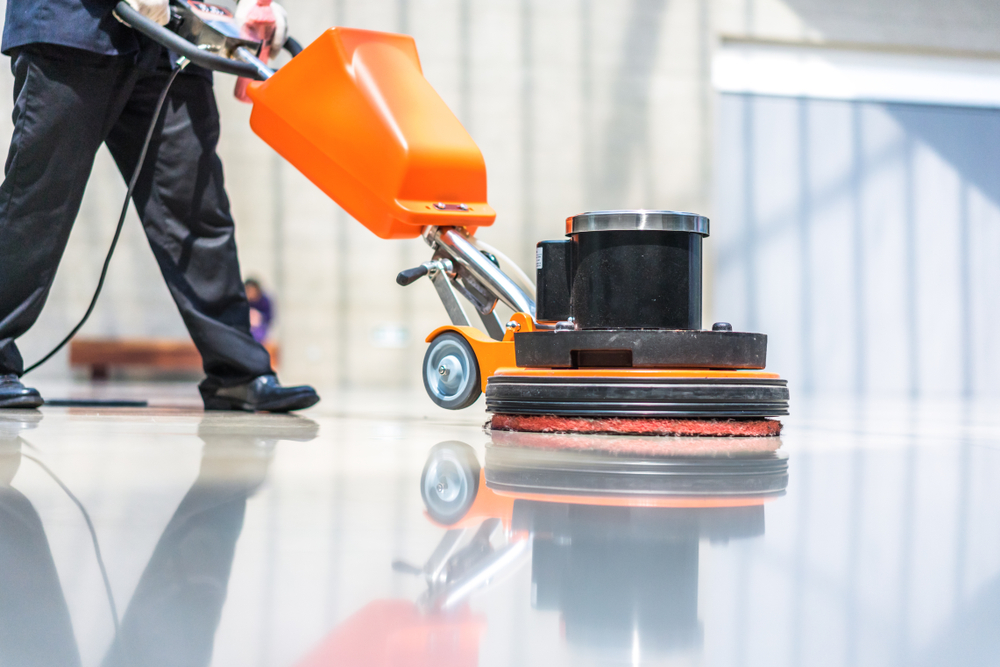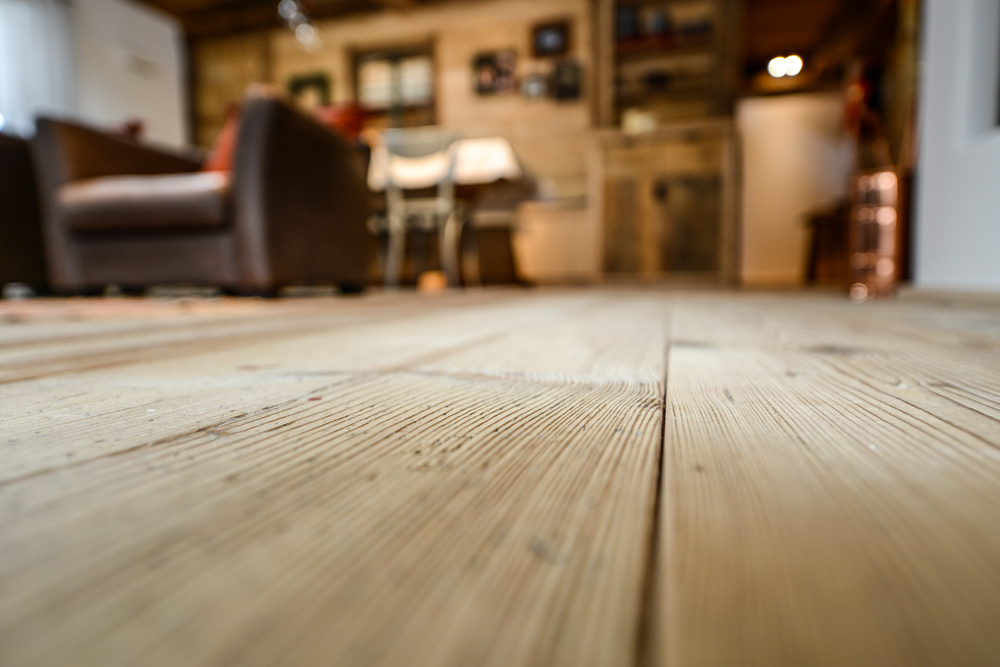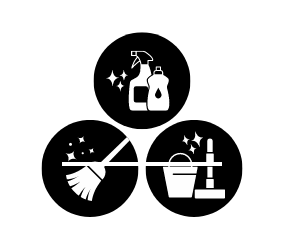Unlocking the Secrets of Immaculate Floors: A Guide to Floor Care Equipment
When it comes to maintaining a clean and welcoming home, one often overlooked aspect is the condition of your floors. Whether you have hardwood, tile, carpet, or laminate, regular residential floor cleaning is essential to keep them looking their best. To achieve this, you need the right tools for the job, and that’s where floor care equipment comes into play. In this comprehensive guide, we will delve into the world of floor care equipment, exploring the different types available, their functions, and how they can revolutionize your floor cleaning routine.
The Importance of Proper Residential Floor Cleaning
Before we dive into the specifics of floor care equipment, it’s important to understand why maintaining clean floors in your home is crucial. Clean floors not only enhance the aesthetics of your space but also contribute to a healthy living environment. Here are some key reasons why residential floor cleaning should be a priority:
1. Health and Hygiene
Dirty floors can harbor allergens, dust mites, and bacteria, which can lead to allergies, respiratory issues, and other health problems. Regular cleaning helps eliminate these potential health hazards.
2. Longevity of Flooring
Proper maintenance can extend the lifespan of your flooring. Regular cleaning prevents the buildup of dirt and grime that can cause wear and tear over time.
3. Aesthetic Appeal
Clean floors make your home look more inviting and well-maintained. Whether you have guests over or simply want to enjoy a pleasant living space, clean floors are a must.
Types of Floor Care Equipment
Now that we understand the importance of residential floor cleaning, let’s explore the various types of floor care equipment available to help you achieve spotless floors.
1. Vacuum Cleaners
Vacuum cleaners are essential for homes with carpets and rugs. They effectively remove dust, dirt, pet hair, and debris from your floors, leaving them clean and fresh. There are different types of vacuum cleaners, including upright, canister, and robotic models, each with its own set of advantages.
- Upright Vacuum Cleaners: These are powerful machines designed for deep cleaning carpets. They often come with attachments for cleaning other surfaces like upholstery and curtains.
- Canister Vacuum Cleaners: Canister vacuums are versatile and suitable for a variety of floor types. They have a canister that houses the motor and filter, connected to a wand and a nozzle for efficient cleaning.
- Robotic Vacuum Cleaners: These autonomous devices can be programmed to clean your floors at specific times. They navigate your home, avoiding obstacles, and provide a hands-free cleaning solution.
2. Brooms and Dustpans
Traditional brooms and dustpans are still handy tools for sweeping away loose dirt and debris from hard floors. They come in various materials and designs, including synthetic bristles, natural fibers, and even microfiber brooms for better dust trapping.
3. Mops and Steam Cleaners
Mops and steam cleaners are essential for giving hard floors, such as tile, hardwood, and laminate, a thorough clean.
- Traditional Mops: These mops come in both string and flat designs and are used with a bucket of water or a specialized cleaning solution.
- Steam Cleaners: Steam cleaning is an eco-friendly and effective way to sanitize and clean hard floors. These machines use hot steam to dissolve dirt and kill bacteria without the need for chemicals.
4. Carpet Cleaners
For deep cleaning carpets, especially in high-traffic areas, carpet cleaners or carpet shampooers are a must. These machines use a combination of water and cleaning solution to remove deeply embedded dirt and stains.
5. Floor Polishers and Buffers
If you have hardwood or other types of sealed flooring, floor polishers and buffers can restore the shine to your floors. They work by polishing the surface and can be a game-changer for maintaining the luster of your floors.
Choosing the Right Floor Care Equipment
Now that you know the different types of floor care equipment available, how do you choose the right one for your needs? Here are some factors to consider:
1. Flooring Type
The type of flooring in your home is a crucial factor in selecting the right equipment. Carpeted floors require a vacuum cleaner, while hard floors can benefit from a mop, steam cleaner, or floor polisher.
2. Cleaning Needs
Consider the specific cleaning needs of your home. Do you have pets? Are there high-traffic areas that require frequent cleaning? Do you need a floor strip and wax? These factors will help you determine the type of equipment you need.
3. Budget
Floor care equipment comes in a wide range of prices. Set a budget that aligns with your needs and preferences. Remember that investing in quality equipment can save you money in the long run by extending the life of your floors.
4. Storage Space
Consider the storage space available in your home. Some floor care equipment, like upright vacuum cleaners, can be bulky and require ample storage space.
5. Ease of Use
Choose equipment that you feel comfortable using. If you have physical limitations, look for models with ergonomic designs and user-friendly features.
Residential floor cleaning is a crucial aspect of maintaining a healthy, attractive, and long-lasting home. Investing in the right floor care equipment can make this task much easier and more efficient. Whether you have carpeted floors, hardwood, tile, or laminate, there’s a piece of equipment designed to meet your needs.
Take the time to assess your flooring type, cleaning requirements, budget, and storage space to make an informed decision. With the right floor care equipment in your arsenal, you can unlock the secrets to immaculate floors that will impress both guests and yourself with their cleanliness and beauty. Say goodbye to dusty, dirty floors, and say hello to a cleaner, healthier living space.
Transforming Your Space: The Great Art of Floor Strip and Wax
A well-maintained floor can make a world of difference in the overall appearance of a space. It not only enhances the aesthetics but also contributes to a clean and hygienic environment. Among the various methods to keep your floors in top-notch condition, floor strip and wax is a fundamental process that can rejuvenate tired, worn-out floors whether you have tile or wooden floors. In this guide, we’ll delve into the art of floor strip and wax, exploring its benefits, step-by-step procedures, and the long-lasting impact it can have on your home or business.

The Importance of Floor Strip and Wax
Floors endure a considerable amount of wear and tear over time, from foot traffic to spills and stains. This continuous stress can lead to a dull and unattractive appearance, as well as compromise the integrity of the floor surface. Floor strip and wax is a comprehensive solution that addresses these issues by removing old wax and dirt buildup, revealing the clean, pristine surface beneath, and applying a fresh coat of wax to protect and enhance the floor’s appearance.
Benefits of Floor Strip and Wax
- Restores Shine: One of the most noticeable benefits of floor strip and wax is the restoration of the floor’s natural shine. Over time, dirt, grime, and old wax can cause floors to look dull and lifeless. By stripping away these layers and applying a fresh coat of wax, your floors will gleam like new.
- Enhances Durability: Wax acts as a protective barrier for your floors. It shields them from scratches, scuffs, and stains, extending their lifespan. Regular floor strip and wax not only keeps your floors looking great but also ensures they remain resilient over time.
- Improves Safety: Worn-out floors can become slippery and hazardous. Floor strip and wax not only improves the appearance of your floors but also enhances safety by providing better traction, reducing slip and fall accidents.
- Cost-Effective: Investing in floor strip and wax is a cost-effective alternative to completely replacing your flooring. It revitalizes your existing floors, saving you money in the long run.
- Maintains Hygiene: Over time, dirt and grime can penetrate the cracks and crevices of your flooring, leading to an unsanitary environment. By removing these contaminants during the floor strip and wax process, you can maintain a cleaner, more hygienic space.
The Step-by-Step Process
Now that you understand the benefits of floor strip and wax, let’s dive into the step-by-step process to transform your floors:
- Prepare the Area: Clear the area of all furniture and obstacles to ensure an unobstructed workspace.
- Dust and Sweep: Thoroughly remove loose dirt and dust from the floor using a broom or a vacuum cleaner.
- Select the Right Stripper: Choose a high-quality floor stripper that is suitable for your specific flooring type. Follow the manufacturer’s instructions for dilution and application.
- Apply the Stripper: Using a mop or an applicator, evenly spread the floor stripper across the entire surface. Allow it to sit for the recommended dwell time to loosen the old wax and dirt.
- Scrub the Floor: Use a floor scrubbing machine or a scrub brush to agitate the stripper and remove the old wax and grime. Pay special attention to high-traffic areas and stubborn stains.
- Rinse and Neutralize: Rinse the floor thoroughly with clean water to remove any remaining stripper residue. Next, apply a neutralizer to ensure all chemicals are removed from the floor.
- Dry the Floor: Allow the floor to dry completely before proceeding to the next step.
- Apply New Wax: Using a clean mop or applicator, apply a fresh coat of floor wax evenly over the entire surface. Follow the manufacturer’s recommendations for drying time between coats.
- Buff the Floor: Once the wax has dried, use a floor buffer or a high-speed burnisher to buff the floor to a beautiful, glossy finish.
- Replace Furniture: After the wax has fully cured, move furniture and other items back into the room.
Floor strip and wax is a transformative process that can breathe new life into your floors, whether they are in a residential or commercial space. The benefits are clear: improved appearance, enhanced durability, increased safety, and cost-effectiveness. By following the step-by-step process outlined in this guide, you can enjoy the many advantages of floor strip and wax and maintain a clean and beautiful environment for years to come. Don’t let worn-out floors dim the appeal of your space; instead, consider the art of floor strip and wax to revitalize and protect your flooring investment.
10 Mistakes to Avoid When Performing Wood Floor Care
Wooden flooring is a timeless and elegant addition to any home, exuding warmth and character that can transform a space. However, to maintain its beauty and durability over time, proper wood floor care is essential. Whether you’ve just installed a brand new wood floor or you’re looking to revitalize an existing one, there are several mistakes you should avoid to ensure that your wooden flooring remains in pristine condition for years to come. In this article, we’ll delve into the ten common mistakes to steer clear of when it comes to wood floor care.

1. Neglecting Regular Wood Floor Care
One of the most fundamental mistakes homeowners make is neglecting regular cleaning of their wooden flooring. Dust, dirt, and debris can accumulate over time, scratching the surface and dulling its shine. A simple wood floor care routine of sweeping or vacuuming with a soft bristle attachment can go a long way in preventing unnecessary wear and tear.
2. Using Harsh Cleaners
While it’s important to conduct wood floor care regularly, using harsh chemical cleaners is a big no-no. These cleaners can strip away the finish and damage the wood, leading to fading and discoloration. Instead, opt for mild, pH-neutral cleaners specifically formulated for wood floor care to maintain its natural beauty.
3. Skipping Doormats and Rugs
Prevention is key when it comes to preserving your wooden flooring. Placing doormats at entrances and rugs in high-traffic areas can significantly reduce the amount of dirt and grit that gets tracked onto the floor. This simple wood floor care step can help prevent scratches and scuffs, keeping your wood floors looking their best.
4. Not Managing Moisture
Wood is sensitive to changes in humidity and moisture levels. Excess moisture can cause wood to swell, leading to warping and cracking, while low humidity can result in shrinkage. Invest in a humidifier for climate control and promptly clean up any spills to prevent lasting damage.
5. Using Incorrect Cleaning Tools during Wood Floor Care
Using abrasive tools like steel wool or rough scrub brushes can cause irreversible damage to your wooden flooring. Opt for soft microfiber mops or cloths when cleaning and always follow the manufacturer’s recommendations for approved floor cleaning equipment and methods.
6. Neglecting Regular Maintenance
Beyond regular wood floor care, regular maintenance is crucial for wood floor care. Failing to address minor issues like scratches or chips can lead to larger, more costly repairs down the line. Address these issues promptly by using touch-up kits or seeking professional help when needed.
7. Ignoring Protective Pads
Furniture can easily scratch and dent wooden flooring, especially when moved or shifted. Placing protective pads or felt under furniture legs can prevent this damage and keep your floors looking flawless.
8. Allowing Sun Exposure
Direct sunlight can cause your wooden flooring to fade over time. Use curtains, blinds, or UV-blocking window films to limit sun exposure and protect the natural color and beauty of your wood floors.
9. Incorrect Sanding and Refinishing
Sanding and refinishing are effective ways to revitalize your wooden flooring. However, performing these tasks without proper knowledge and equipment can lead to uneven surfaces and irreparable damage. If you’re not confident in your abilities, it’s best to hire a professional to ensure your wood floor care is done correctly.
10. Skipping Regular Inspections
Lastly, not inspecting your wooden flooring regularly can lead to problems going unnoticed until they become severe. Keep an eye out for any signs of damage, such as cracks, gaps, or unevenness, and address them promptly to prevent further deterioration.
Wood floor care requires attention, diligence, and a proactive approach. By avoiding these ten common mistakes – from neglecting regular cleaning to using harsh chemicals and skipping essential floor maintenance – you can ensure that your wood floors remain a stunning centerpiece in your home. Remember that proper wood floor care not only enhances the aesthetic appeal of your space but also prolongs the lifespan of your investment, allowing you to enjoy the warmth and elegance of wooden flooring for years to come.
